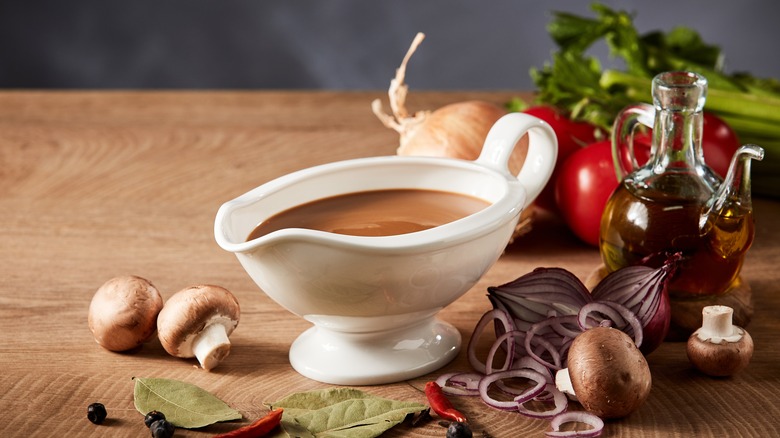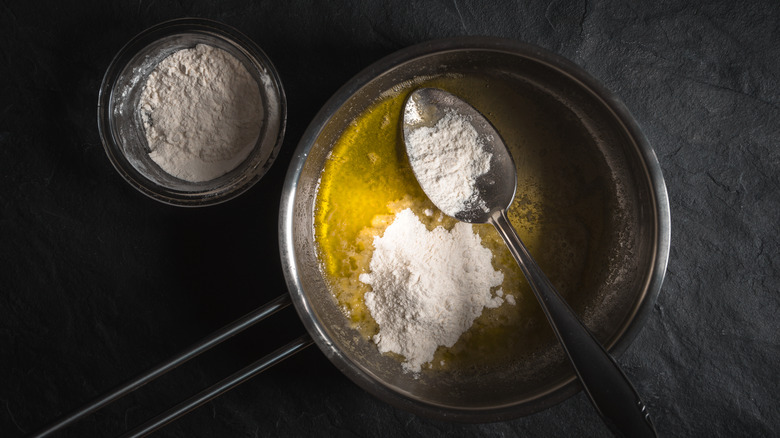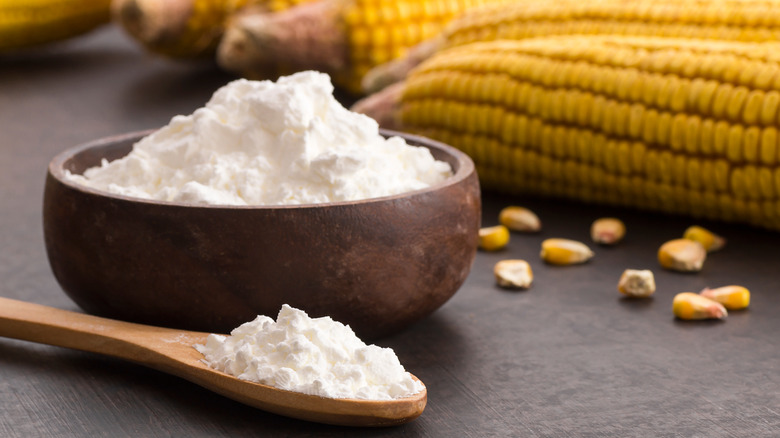What To Do If Your Gravy Is Too Thin
Your roast beef is cooked to medium-rare perfection. The Yorkshire puddings have risen and are a scrumptious golden brown. And the mashed potatoes are a picture of creamy goodness. All that's left is your arch nemesis: the gravy. Gravy seems easy enough to prepare. After all, traditional recipes contain a mere handful of ingredients. How hard can that be? Well, it would seem that a lot can go wrong when making a simple gravy, making it "not so simple" at all.
What are some of the mistakes you're making with your gravy? If you have ever had fries and gravy from a high school cafeteria, you have likely encountered the dreaded "lumpy gravy." Eating Well blames this condition on forgoing a whisk in favor of a spoon for mixing, or adding a "thickener" like flour or cornstarch straight into the mix without using liquid to make a paste first. Another common woe is greasy gravy. Ack. No one wants to pour an oil slick over their carefully crafted turkey, stuffing, and mashed. Serious Eats says that this can occur when you fail to remove the rendered fat from your drippings.
One of the biggest and most common gravy fails is the watery or "too thin" gravy. You know, the stuff that pools on the bottom of the plate instead of coating the food's surface. Thankfully, you will no longer need to stress over your runny gravy. After all, there's a fix for that.
Two great gravy thickeners are the slurry and the roux
You may not have realized that there are several ways to thicken up soupy gravy. The most obvious way is to reduce the liquid. Serious Eats says that by setting your gravy to simmer and allowing some of the water to evaporate, your gravy will thicken up. This method, however, does have some flaws, as it requires patience that not everyone possesses. It will equate to less gravy as the liquid disappears. And, if you've already seasoned your gravy, the decrease in water may make your final product taste like a giant salt lick.
If you can't take the water out, another option is to put more solids in. A popular thickener is flour. Eating Well offers two ways to use flour to add some body to your gravy. The first is a slurry, which involves "whisking 2 tablespoons of flour with cold water" and adding it to your gravy. The other option is to create a roux. The Food Network says a roux uses one part fat and one part flour that are stirred together continuously for about 3 to 5 minutes. By adding this to your watery gravy, it will greatly improve its consistency. Flour, however, is not the only noteworthy gravy thickener.
Cornstarch can save your gravy
If you happen to be anti-gluten, cornstarch is a great substitute for wheat flour when it comes to the role of "rescuer of gravy." Real Simple offers that the ideal ratio for thickening gravy is "one tablespoon of cornstarch per one cup of liquid." They do say, however, that if you prefer thicker gravy you can use two tablespoons of cornstarch instead. And, remember to whisk until your thickening agent blends in with the rest of the gravy seamlessly.
Master Class' Thomas Keller says that you could also opt to make a beurre manié (aka kneaded butter). This involves using one tablespoon of butter that has been softened and a tablespoon of flour. Blend the two together using your hand. Form the mixture into a ball, plop it into the gravy, and whisk. Voila! You gravy will thicken beautifully. And if you're not planning on using your gravy right away, Food & Wine explains that gravy will usually thicken up after a night in the fridge. Problem solved.
Never again will your lovingly created dishes be compromised by subpar gravy. Like a true superhero, you have shown your arch nemesis who's boss. Yes, you have conquered gravy.


